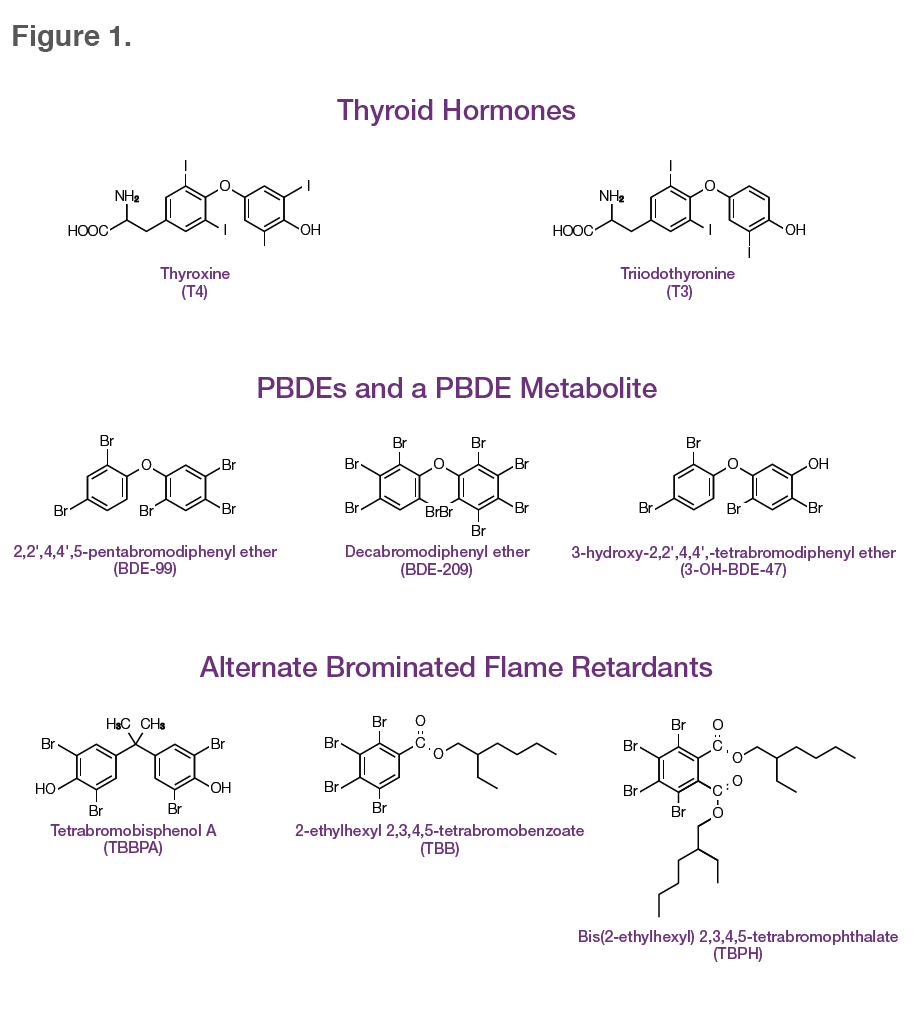Purpose:
Recent research has suggested that the dramatic increase in thyroid cancer rates over the last 30 years is due to more than just increased detection of small, harmless tumors.[i] Now, researchers from Duke University in an article published in Current Opinions in Oncology are pointing to another potential factor: the rise in flame retardant chemicals used in common household products, which may increase risk of thyroid dysregulation and cancer.[ii]
Background:
Synthetic chemicals are increasingly used as flame retardants (FRs) in household materials and products such as foam insulation, electrical circuit boards, furniture and televisions. Polybrominated diphenyl ethers (PBDEs), once one of the most commonly used FRs, have been largely phased out due to concerns about their potential harmful impacts on health. PBDEs share a similar chemical structure with thyroid hormones (see Figure 1), particularly thyroxine (T4) and triiodothyronine (T3), which may confuse the body and disrupt endocrine function. Now, alternative FRs, including other brominated flame retardants and organophosphate flame retardants, have replaced most PBDEs. Although these other compounds are not as well studied as PBDEs, their chemical structure suggests that they may also interfere with thyroid regulation.
Recent Data:
Exposure to PBDEs is associated with thyroid dysregulation – primarily T4 reductions – in animals and new research focuses on the specific methods of action. PBDEs also impact human thyroid regulation and are related to clinical thyroid disease, but these associations appear both dose and life-stage dependent. Emerging animal data suggest that newer alternative FRs may cause similar or even more harmful endocrine disrupting effects than the PBDEs they replaced. These data have suggested links between alternative FRs and T4 and T3 level alterations, as well as follicular hyperplasia in the thyroid tissue.

Conclusion:
Based on these data, the authors conclude that exposure to flame retardant chemicals may impact thyroid regulation, which may in turn implicate them in thyroid disease and cancers.
[i] Lim H, et al. Trends in Thyroid Cancer Incidence and Mortality in the United States, 1974-2013. JAMA. 2017;317(13):1338-1348.
[ii] Hoffman, K, Sosa JA, Stapleton, HM. Do flame retardant chemicals increase the risk for thyroid dysregulation and cancer? Curr Opin Oncol. 2017;29:7-13.